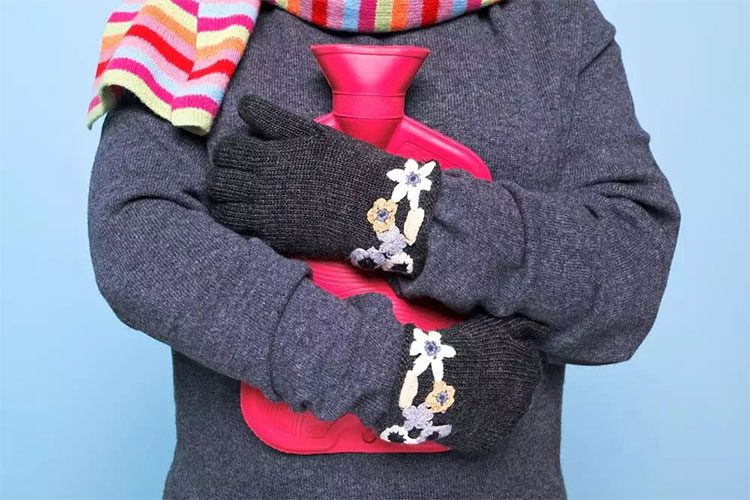The feet are considered the “second heart” of the human body due to the abundance of blood vessels, and they need to be kept warm during winter.
As December arrives, the cold of winter becomes more pronounced. Certain parts of the body are more susceptible to cold, which can affect health.
According to People, the following body parts must be kept warm during winter.

Cold abdomen can easily cause stomach pain. (Photo: Yours).
1. Abdomen
Cold in the abdomen can easily lead to stomach pain, especially for those who have experienced stomach issues before. Additionally, women who allow their abdomen to be exposed to cold may face health problems such as menstrual cramps or irregular periods.
Therefore, in winter, it is advisable to choose clothing that is warm and covers the abdomen. At night, it is best to cover the abdomen with a blanket while sleeping.
2. Feet
The feet are regarded as the “second heart” of the human body due to the numerous meridians, particularly in the area below the ankles.
3. Neck
The drop in temperature makes individuals more susceptible to coughs and colds, which can even affect the lungs and obstruct blood circulation. To prevent this, it is essential to protect the neck by wearing a warm scarf.
4. Knees
The peripheral nerves surrounding the knees are very sensitive to changes in weather. In winter, blood circulation in the knees decreases, leading to pain, swelling, and redness. Therefore, it is important to keep the knees warm and engage in light movement to maintain flexibility.
5. Shoulders
Few realize that the shoulders are also very susceptible to cold. If not kept warm, the shoulders can become painful, causing discomfort in daily life.
6. Head
The head is a crucial part of the body with numerous interconnected blood vessels. When it gets cold, it can easily lead to symptoms such as colds, nasal inflammation, headaches, and toothaches. Notably, the head is also among the body parts that do not tolerate temperature changes well. In cold conditions, the heat loss from the head can account for up to 30% of the body’s total heat, and when the temperature drops to 4 degrees Celsius, this figure can rise to 60%.
To avoid illness, it is important to wear a hat when going outside in winter, and it is even better to cover the forehead. When sweating, do not immediately remove the hat; instead, allow the sweat to evaporate gradually. Additionally, each morning upon waking, you should use your hands to massage your scalp, which helps improve blood circulation and effectively keeps the head warm.
7. Ears
Although small in size, the ears have a relatively large surface area exposed to the air. This heat can easily dissipate, and the skin on the outer ear is thin and lacks protective layers, making it susceptible to cold. When entering a warm room from the cold, you should rub your hands together to warm them, then place them against your ears for about 5 to 10 minutes to warm them up.


















































